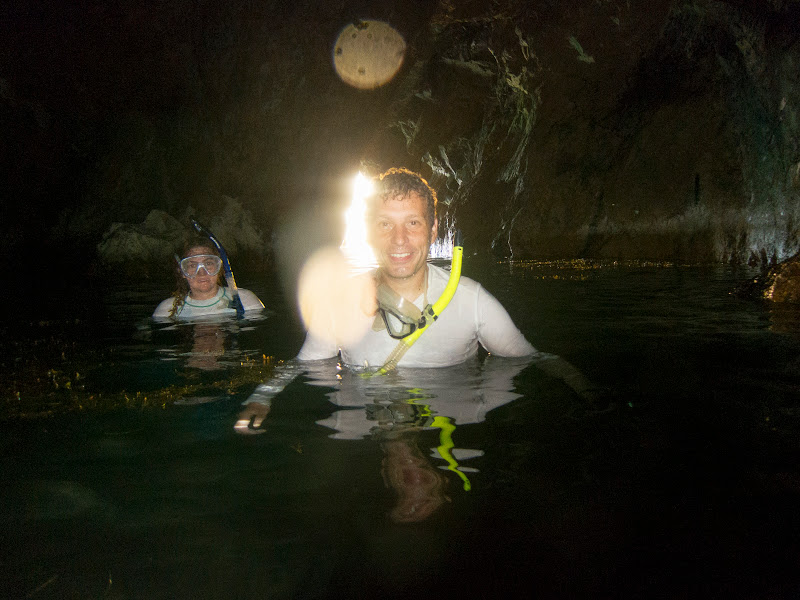My brothers got me a
PS4 for my birthday, so here are my first impressions. The first thing I did after unboxing the unit was to install an old
Momentus XT hybrid SSD in place of the 5400rpm drive. It's not worth installing a brand new SSD onto the PS4 because that would cost as much as the console itself, but since I had a couple of the old drives around before SSDs became reliable enough to use on the laptops/desktops, I repurposed them as drives for the PS3 and PS4. This particular drive has a 7200rpm spinning platter, unlike the
newer drives that utilize a 5400rpm platter. The net result is that even if the SSD cache on the drive doesn't get hit that frequently, the increased RPM should grant better performance compared with the OEM drive.
The experience of doing so was a snap. Unlike other vendors, Sony actually designed the system to make replacing drives easy. You slide back the left side of the device, exposing the drive bay, undo one screw, and slide out the caddy holding a 2.5inch drive. The OEM drive is 7.5mm thick, but Sony thoughtfully made the caddy such that it supports a 9mm drive, so the momentus fit with no problems. The OS install was painless and easy, though finding the power on button was surprisingly challenging, since there was no obvious button, just a touch sensitive pad.
Installing the device into my existing entertainment system was straightforward. One potential complication if you have an ancient analog receiver like I do, is that the PS4 doesn't support analog output, only HDMI. I redirected the audio to the analog receiver through the TV, but that adds lag, if that sort of thing bothers you.
Once the system boots up, it's clear that this is a different animal than the PS3. It boots up quickly, and you can quickly download multiple applications and games easily and quickly. Even logging onto Amazon Prime was easy as the controller felt less laggy than the PS3's. What's interesting to me is that the PS4 controller feels much more comfortable than the PS3's, so the ergonomic improvements are definitely very welcome. The controller also uses standard micro USB ports, and thankfully can be charged with any charger, unlike the PS3's which required special chargers. What is much appreciated is the headphone port on the controller: I could mute the TV and then playing using headphones attached to the controller. It'll even support a microphone headset, and the PS4 comes with one so you can chat. I eschewed the crappy PS4 default one for my
Koss Portra Pros, and the sound was acceptable, though not as nice as when I plugged it into my
Vita.
I stuck the
Life of Pi into the PS4 and watched it with my wife. That's a gorgeous movie and the PS4 was more than capable of doing rendering the movie in gorgeous 1080p. I was very pleased, though you wouldn't buy a PS4 just to act as a Blu Ray player, knowing that it can serve the function is the major reason to go with one of the major video game consoles, as opposed to a Nintento Wii or Wii U, which can't serve as a general media player.
Vudu and Amazon Instant Video both installed nicely onto the PS4, as did YouTube (as of the 2.0 update). You're not missing anything over any of the other streaming sticks or streaming video boxes. What's missing from the PS3 is that it won't serve as a DLNA client, or even play music from disk.
I've already completed one game,
Resogun on the device, and it's definitely very impressive. One problem with the PS4 right now is that there aren't that many high quality titles out yet. I expect that to change over the next year, and look forward to being able to play console titles that my 5 year old desktop probably won't be able to keep up with. That's an unfair comparison, since the 5 year old desktop is driving a 1440p display, but that's how it goes.
One of the big benefits of having a PS4 and a Vita is that you can use the Vita as a remote play terminal for the PS4. The two sync up very nicely, and you can use the OLED screen to play games on the PS4 via remote play from any room in the house with decent wifi. This runs surprisingly smoothly with next to no lag, and lets you do things like play games while someone else uses the TV to watch streaming video, though you can't do that if your primary input into the TV is the PS4, so you need at least a secondary streaming device like the
FireTV stick or
Chromecast. Now, the problem with remote play is that in order to take advantage of it, you need to keep your PS4 in standby mode. Standby mode, however,
consumes nearly half the power projected to be used by your PS4 over its lifetime, so it's not costless.
I'll maintain that right now is a bad time to buy a PS4, while it's the best time ever to buy a PS3. But if you already have a PS3 and are setting up a second room with a TV, then you might as well get a PS4. It's a sleek device, and does its job for anything faster than the alternatives.









